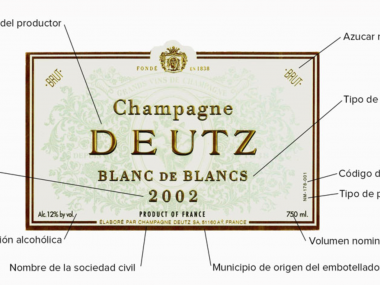Tasting a wine is something we can all do. However, some simple guidelines can help you better appreciate the flavors and aromas that each wine has to offer. Follow these steps to taste wine like an expert:
1. Observe the wine
Look at the wine for a couple of seconds, observe its colour, opacity and viscosity. It is also important to look at the bottle, as it can provide you with very relevant information, such as the vintage, the variety of grape, its Denomination of Origin, among other things, which will help you to know the wine better.
2. Smell the wine
It’s very important to approach wine through smell. What does it smell like? At this point, it is important to go from the broad to the specific, to avoid frustration. That is to say, not to seek to find a particular note but to aim at identifying broader categories, such as citrus fruits or the type of fruit we perceive.
As for the aromas, they can be classified as follows:
- Primary aromas: These are derived from the grape and include fruity, herbal or floral notes.
- Secondary aromas: They come from the practices used to make the wine. The most common are those derived from yeast, which are especially noticeable in white wines, such as the smell of cheese rind, nutshell or aged beer.
- Tertiary aromas: These come from aging, generally in the bottle, although it can also be in oak. They are smells that allude to flavours, such as vanilla, toasted walnut, spices, or even leather.
3. Savour the wine
Our palate is a great tool to know the wine, through its taste and texture. In addition, once we swallow the wine, we can perceive a change in the aromas, as they are received retro-nasally.
As for the taste, our tongues are prepared to perceive what is salty, sour, sweet or bitter in each wine. All wines will have a touch of sourness, due to the inherent acidity of all grapes, although its intensity will vary depending not only on the type of grape but also on the climate.
As for sweetness, it will be manifested in those wines that retain some of the grape’s sugars, which provides natural sweetness, while other wines, on the contrary, will be more bitter. Those that are more difficult to find are those where a salty quality can be perceived, although there are few exceptions.
Another important quality that can be perceived when tasting a wine is it’s texture. By touching the wine with the tongue, we can notice if the wine has a greater texture, something that usually occurs in those wines with a higher alcohol content and maturation. Our palate can appreciate the tannins, which is the component that gives that dryness on the back of the tongue.
The taste of wine is also based on the time it remains on our palate, and whether it settles at the beginning, middle or end. Is it a taste that lasts and remains lodged at the end of our palate or, on the contrary, passes easily and lightly through our mouth?
4. Think about the wine
Finally, it is important that, after having observed, smelled and tasted the wine, you can reflect on the sensations it left you with. Did you like it? What characteristics did you like, what didn’t you like? What aromas could you perceive? What flavours were predominant? Was it balanced? Or, on the contrary, was it too acidic, too alcoholic or with many tannins? What did this wine awaken in you?






